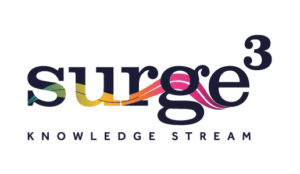On the 7th February 2019, Wells Fargo became the latest victim of technical woes. Customers were left unable to use their debit cards or access their online accounts.
In today’s constantly-connected world, this technical failure is about much more than inconvenience – it’s about broken trust. And that broken trust seems to have driven huge numbers of customers straight to the digital doors of challenger bank Chime. The situation is grave, and it’s not only confined to Wells Fargo. After one of the most turbulent 12 months for technical hiccups and online meltdowns, established banks must fight back if they’re to contend with the growing number of innovative, agile challenger banks like Chime.
Angry Wells Fargo customers = Happy upstart banks
Chime is one of the fastest-growing bank account providers in America. Based exclusively online, among their features are no hidden fees, savings that grow automatically and receiving payment from direct deposit up to two days earlier. They say that it’s “banking the way it should be”. And it seems that many agree.
When Wells Fargo ground to a halt, Chime added 10,000 new customers in a matter of 24 hours – a company record.
“We definitely saw a huge uptick in consumers reaching out to us on Twitter and other social media channels, with the general sense that a lot of them were just at the end of their rope. We even had some dialogue like, ‘Hey, should I switch to you guys? Why should I switch to you guys?'” Chris Britt, Co-founder of Chime
Chime are one of numerous challenger banks that are making waves in the financial services industry – Monzo, Atom Bank and Starling Bank are other promising examples. 28,000 people open a Monzo account every week; Atom Bank, which launched in 2016, has 34,000 customers; while Starling Bank now has 460,000 customers and has just raised £75M more for expanding further throughout Europe.
Younger generations make up a huge proportion of those who are opting to switch to challenger banks, with one in four people under the age of 37 having made the switch.
For established banks, the threat is real AND it’s growing. So, what can established banks do to take the fight back to these ambitious and rapidly expanding banks?
Goal number one – Improve reliability and regain lost trust
First, established banks have two fundamental concerns – trust and reliability. Trust has been eroded in recent years owing to a long line-up of scandals and data breaches – PPI, rate fixing, mis-selling, ‘dark pool’ activities, Forex rigging and money laundering – to mention but a few.
Then there’s the problem of plummeting customer faith in the reliability of their banking services. Lloyds, Santander, Natwest, RBS, Ulster, Barclays, TSB & HSBC have all had technical failures (some multiple) in the last couple of years (it appears that none of the major British banks have been immune).
Goal number two – Deliver innovative, competitive, digital banking
81% of consumers now use mobile apps to manage their finances; these people expect their experience to be seamless – going beyond basic functionality offered by online banking. HSBC’s Connected Money app is one example of a traditional bank being ambitious with the technology they have to offer their consumers, but more needs to be done to claw back the initiative from the challengers and the gauntlet that they have been laying down.
Goal number three – Personalise
Customers expect security, speed and a solid customer experience. But beyond these basic requirements they now also want banking to be built around them and their needs.
The 2018 World Retail Banking Report highlighted a few interesting stats when it comes to what consumers are looking for:
- 49% of customers claiming a positive experience with their bank said that they had been offered personalised services
- 59% said they are looking for tools to help them monitor their monthly budget, with real-time adjustments based on their spending
- 54% want specific real-time offers based on their location (e.g. retail offers based on location and credit card activity).
Traditional banks already hold vast amounts of data to help them in their bid to deliver highly personal experiences, but they have historically struggled to use it in a way that provides this personalised experience to their customers.
The clock is ticking for the established banks. To use a doomsday clock analogy we are at least a minute closer to midnight and a failure to start re-establishing trust, demonstrate innovation and personalise their services is already leading to an erosion that could have serious consequences later down the line. This is the wake-up call, the question is if the established banks are willing (or able) to change. Cut out the service interruptions and downtime and focus on their products from a customer perspective. Do this and they might be able to start earning back the trust that has been slowly ebbing away for some time.




